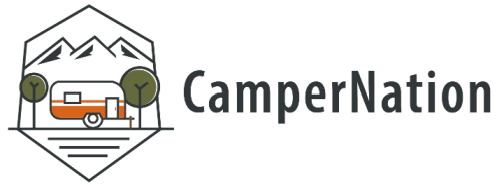Bell Tent vs Dome Tent : Key Differences
Bell tent or dome tent? If you want Instagram-ready glamping vibes, go bell. If you're bracing for wind, rain, and toddler chaos, dome’s your buddy. This guide breaks down space, style, and survival—so you don’t end up crying in your glamping tent at 2AM. Read on to pitch perfect.
The Core Philosophy: Glamping Comfort vs. Backpacking Practicality
Choosing between a bell tent and a dome tent often comes down to the kind of camping experience you're chasing. Bell tents bring a sense of comfort, elegance, and extra space—ideal for longer stays and stylish setups.
Dome tents, by contrast, are designed for mobility and resilience. They’re quick to pitch, light to carry, and built to handle the elements.
If your trip leans towards luxury, go bell. If you’re trekking through hills or dealing with moody weather, dome wins.

Defining the Experience: The "Home Away from Home" vs. "Light and Fast"
Bell tents create a homely atmosphere with their tall ceilings and round design. You can stand up, walk around, and even decorate them with rugs and fairy lights.
Dome tents, meanwhile, prioritise function over form. They’re smaller, more compact, and easy to carry—perfect for wild camping or weekend escapes.
Both serve their purpose, but the vibe is completely different.
A Quick Comparison Table: Space, Weight, Cost, and Setup Time
| Tent Type | Space & Height | Weight | Setup Time | Ideal For |
|---|---|---|---|---|
| Bell Tent | Very spacious with tall centre | Heavier | Moderate | Glamping, families, festivals |
| Dome Tent | Varies by size; compact | Lightweight | Quick | Hikers, backpackers, small groups |
A Head-to-Head Comparison of Critical Tent Features
Space and Livability: Headroom, Floor Area, and Usable Space
Standing Room: The Clear Advantage of the Bell Tent's Central Pole
One of the biggest perks of a bell tent is the ability to stand upright. The central pole and high ceiling make the interior feel more like a room than a tent.
It’s easier to change clothes, move about, or even do some light yoga—if that’s your thing.
Dome tents typically don't offer this luxury unless you're in a high-end, large model.
Floor Space vs. Wall Slope: How Much Room Do You Really Have?
Bell tents have near-vertical walls, which translates to more usable floor space. You won’t find yourself crammed into sloped corners or bumping into the sides when you sit up.
Dome tents, while often roomy in the centre, taper off quickly due to their curved design. This makes them feel smaller, especially for taller campers.
The shape matters more than you’d think.
Dome Tent Vestibules: A Smart Solution for Gear Storage
Many dome tents make up for their limited interior by including vestibules. These sheltered entry areas give you space to stash muddy boots, wet coats, or bulky backpacks.
It’s a clever way to stay organised and keep the sleeping area clean.
Bell tents often rely on sheer space rather than additional compartments.
Material, Durability, and Weather Resistance
Canvas vs. Synthetic: Breathability, Insulation, and Longevity
Bell tents are typically made from cotton canvas—a material that breathes well and insulates better in both cold and heat. It also looks and feels more natural.
However, it’s heavier and can take longer to dry. Dome tents use synthetic materials like polyester or nylon, which are lighter, cheaper, and dry fast.
But they don’t insulate as well or last as long without wear.
Performance in Wind and Rain: Aerodynamics vs. Sturdy Construction
Dome tents are designed to be aerodynamic. Their shape helps them shed wind efficiently, making them a smart choice in exposed or coastal areas.
Bell tents are stable when pitched properly and guyed out, but can struggle in high wind unless reinforced. Their heavyweight materials do help keep them grounded, though.
In wet weather, both need proper waterproofing to perform at their best.
Suitability for All Seasons: Can You Use Them in Winter?
With the right setup, both tent types can be used year-round.
Bell tents, especially with stove jacks and thick canvas, excel in colder months. They retain heat well and offer comfort over long stays.
Dome tents come in 4-season versions, with extra poles and reinforced fabrics. These are made to handle snow load and extreme winds—great for alpine conditions.

Portability and Setup: Weight, Pack Size, and Ease of Pitching
Packability: Why Dome Tents are the Hiker's Choice
Dome tents are easy to pack down and light enough for backpacking. They’re a no-brainer for solo campers or anyone hopping between sites.
They fit neatly in a rucksack or small boot space, which is a huge win for compact travel.
Bell tents, in contrast, are bulky. You’ll need a vehicle to transport them.
The Pitching Process: Is a Bell Tent Really a One-Person Job?
Technically, yes. Most bell tents rely on one central pole, a groundsheet, and guy lines.
With practice, one person can set it up in 15–20 minutes. That said, the weight and bulk can make it awkward if you’re on your own.
Dome tents are generally faster to pitch and require less space to lay out.
Transporting Your Tent: From the Car Boot to the Campsite
Dome tents are ideal for campers who have limited space in their car or don’t want to carry heavy gear.
Bell tents need more planning. You may need to rearrange the boot or bring an extra bag to fit it all in.
It’s not a problem if you’re driving in, but it’s worth considering if access is tricky.
Which Tent is Right for Your Camping Style?
Who Should Buy a Bell Tent?
The Family Camper and "Glamping" Enthusiast
If you’re camping with kids or want to recreate the comforts of home, a bell tent is a dream. It’s spacious, cosy, and perfect for glamping.
You can add beds, carpets, even a small wood stove.
Long-Term Camping and Semi-Permanent Setups
For stays that last a week or more, a bell tent offers unmatched comfort. You’ll appreciate the space, airflow, and stability.
They’re also great for semi-permanent use—like garden retreats or pop-up guest rooms.
Event Use: Festivals, Parties, and Retreats
Bell tents are a festival favourite. They’re easy to spot, easy to share, and easy to decorate.
Perfect for retreats, events, or setting up a group basecamp with style.

Who Should Buy a Dome Tent?
The Backpacker and Wild Camper
If you’re carrying everything on your back, go dome. The lightweight build and fast pitch make them perfect for wild camping and spontaneous stops.
You can set up almost anywhere.
Budget-Conscious and First-Time Campers
Dome tents tend to be more affordable. They’re a smart starting point for those new to camping or only going on short trips.
Setup is quick and less intimidating for beginners.
Campers with Limited Storage and Transport Space
Short on cupboard space or driving a small car? A dome tent fits the bill.
It won’t hog your closet or boot, and you’ll still get a reliable shelter for most weather conditions.
Other content you might like:






Leave a comment